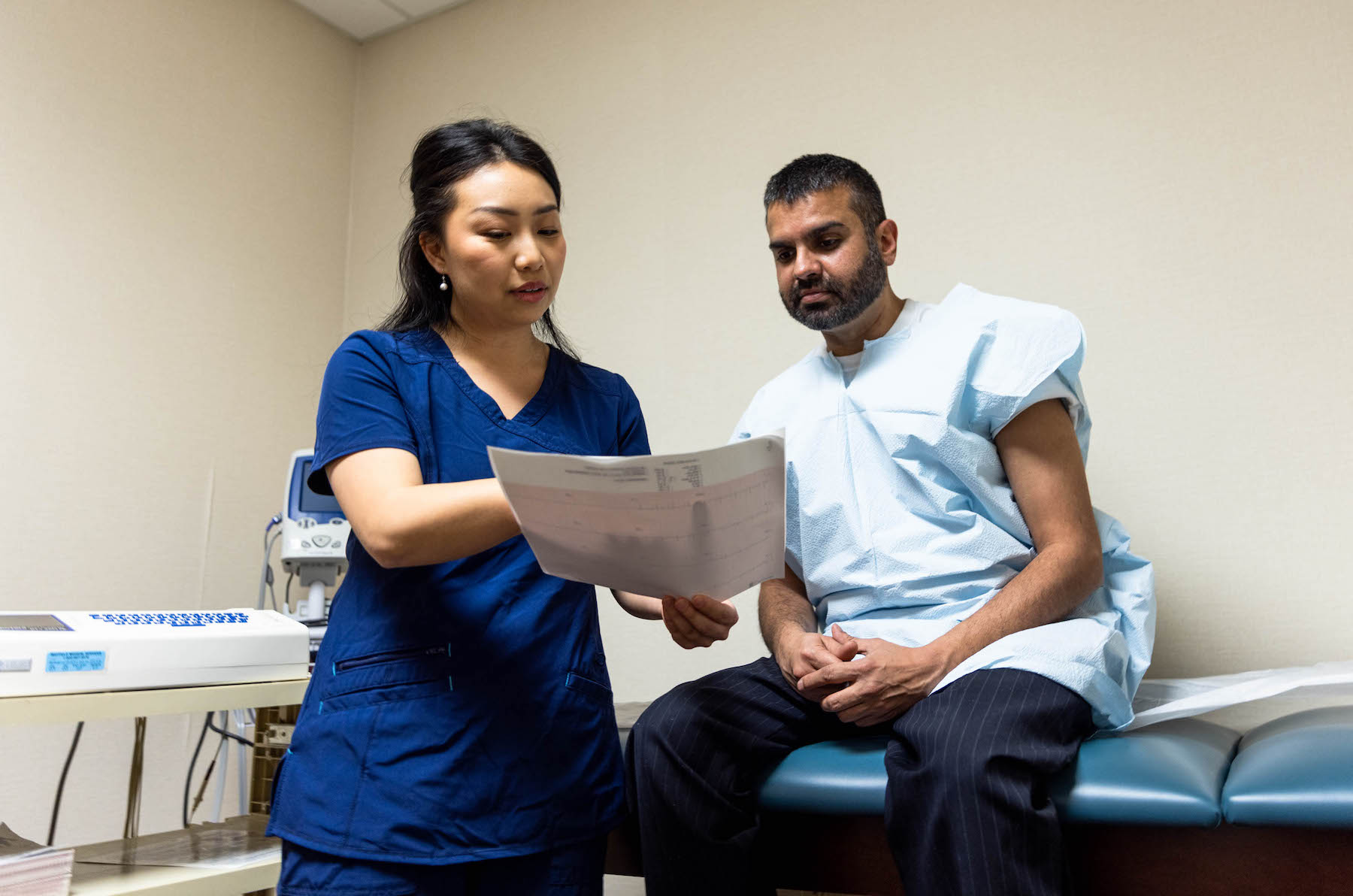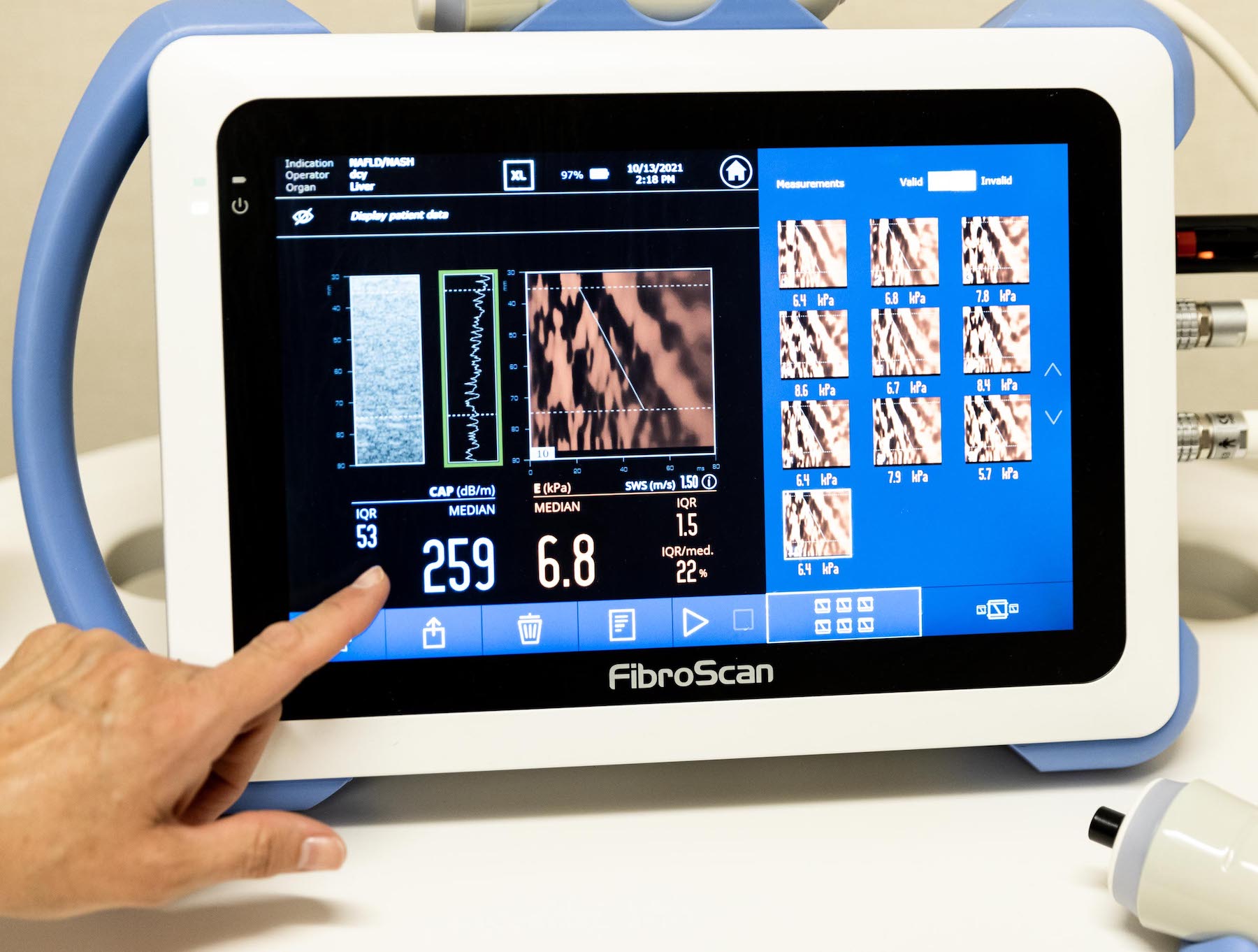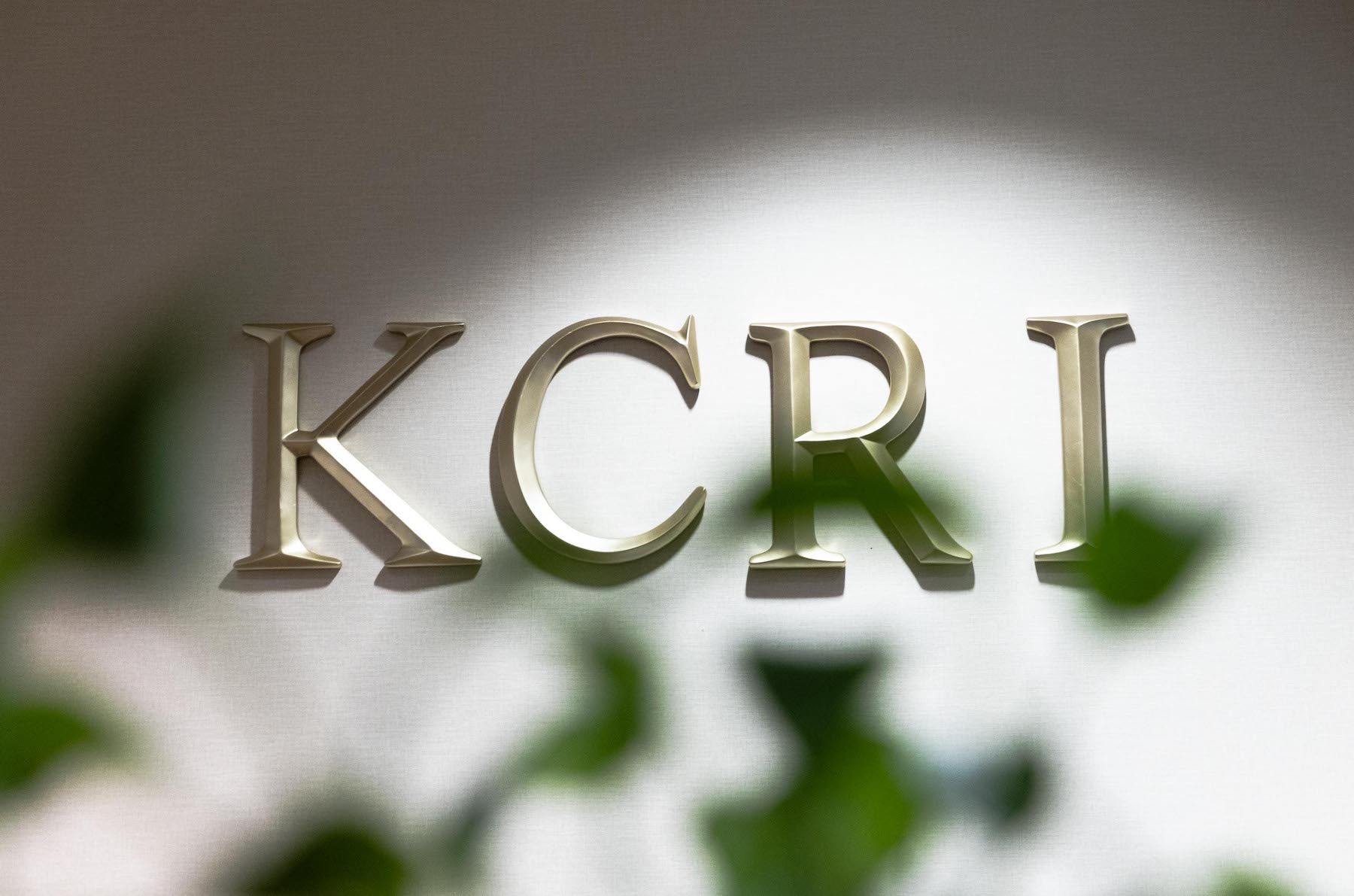What is Non-Alcoholic Fatty Liver Disease?
Non-Alcoholic Fatty Liver Disease (NAFLD) is the accumulation of fat deposits in the liver not related to alcohol use.
Affected Organs
- Liver
Causes
- Obesidad
- Síndrome Metabólico
- Colesterol Alto
- Diabetes de tipo II
- Genetic Factors
- Diet
Side Effects
NAFLD usually causes no signs and symptoms. When it does, they may include:
- Fatigue
- Pain or discomfort in the upper right abdomen
Affected Ages
All Ages
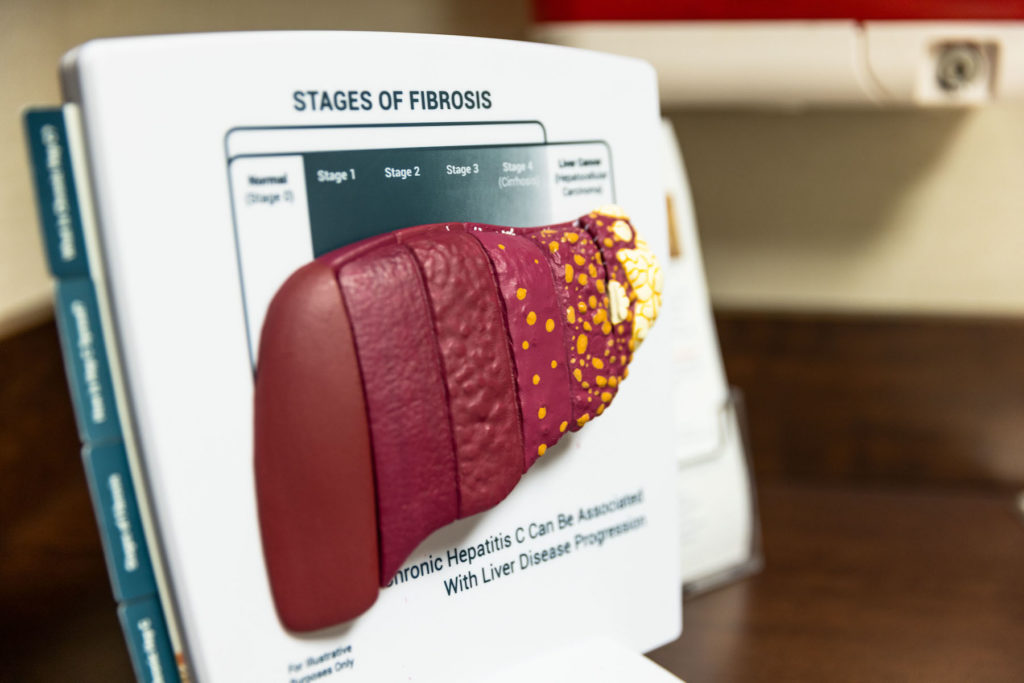
NAFLD Prevention
Be Proactive
Experts do not yet know why some people accumulate fat in the liver while others do not, although it is understood that female Hispanic patients can be genetically disposed.
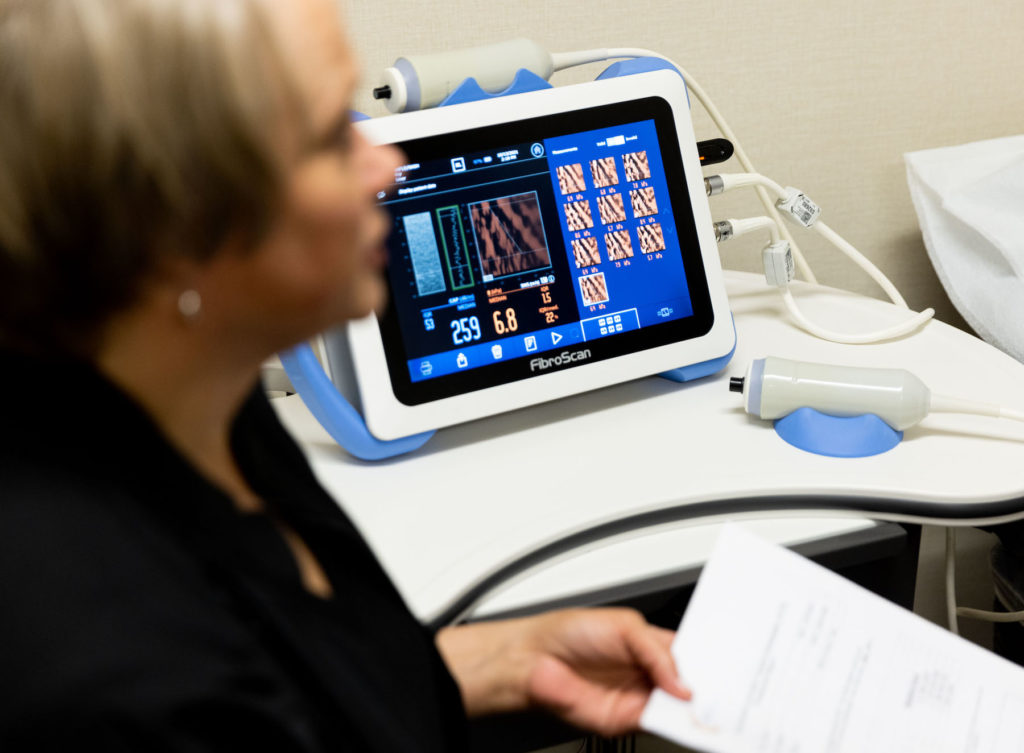
Proactive at KCRI
Most patients are diagnosed with NAFLD in their 30s. Over time, NAFLD can cause them to gain weight and consequently cause Type 2 Diabetes.
But proactive lifestyle changes such as an increase in exercise, decrease in (or elimination of) alcohol consumption, and improved diet can all help reduce the symptoms of fatty liver.
FAQs about NAFLD
Preguntas frequentes
I don’t drink alcohol. How did my liver become damaged?
A common misconception among patients is that the liver can only be damaged by consuming alcohol. However, during a routine lab for a patient experiencing symptoms of liver damage, we discover that fat in the liver is doing just as much damage (if not more) than alcohol consumption. In fact, there can be several other causes of this fat build up, such as genetics, comorbidities (like diabetes), and diet.
What is the difference between Non-Alcoholic Fatty Liver Disease and Fatty Liver Disease?
The only difference between these two diagnoses is the patient reporting of alcohol consumption. Even a liver biopsy cannot determine the cause of fatty liver, as liver damage appears virtually identical whether caused from comorbidities, alcohol consumption, or genetics.
How serious is fatty liver? What is my prognosis?
There are four main levels of progression when it comes to Fatty Liver Disease.
- Normal – Little to No Damage Present
- NAFL – Ballooning & Inflammation
- NASH / Fibrosis – Advanced Cell Damage
- Cirrhosis – Long-Term Scarring
Early stages of fatty liver may be reversed or at least significantly improved, but each individual patient can be different when it comes to prognosis and treatment based on genetics and lifestyle factors.
What does a NAFLD diagnosis mean for me?
Everyone responds differently. There are a lot of unknowns about fatty liver and why some people have it and some don’t, and why some people’s may progress more quickly.
Looking at medications – this is why these studies are being done. the more they understand, the better they can identify the causes. it takes time, because it’s not just one thing.
What are my options for treating fatty liver?
A Fibroscan Test can determine the degree of your liver damage and level of scarring, and enable us to rule out autoimmune, gallbladder, and viral diseases; acute disorders; and other potential concerns.
There aren’t a lot of clinical trials available for the treatment of fatty liver, as lifestyle changes, including diet and exercise, can help significantly reduce scarring of the liver. At KCRI, however, we offer Phase IV trials to help identify potential medication and begin treating the symptoms of fatty liver.
FibroScan KCRI
Aquellos que participen:
- Verán a un médico certificado por la junta sin costo alguno
- Tendrán Acceso a posibles opciones de Tratamientos antes que el Público General
- Podrán ser compensados por su tiempo y viaje

